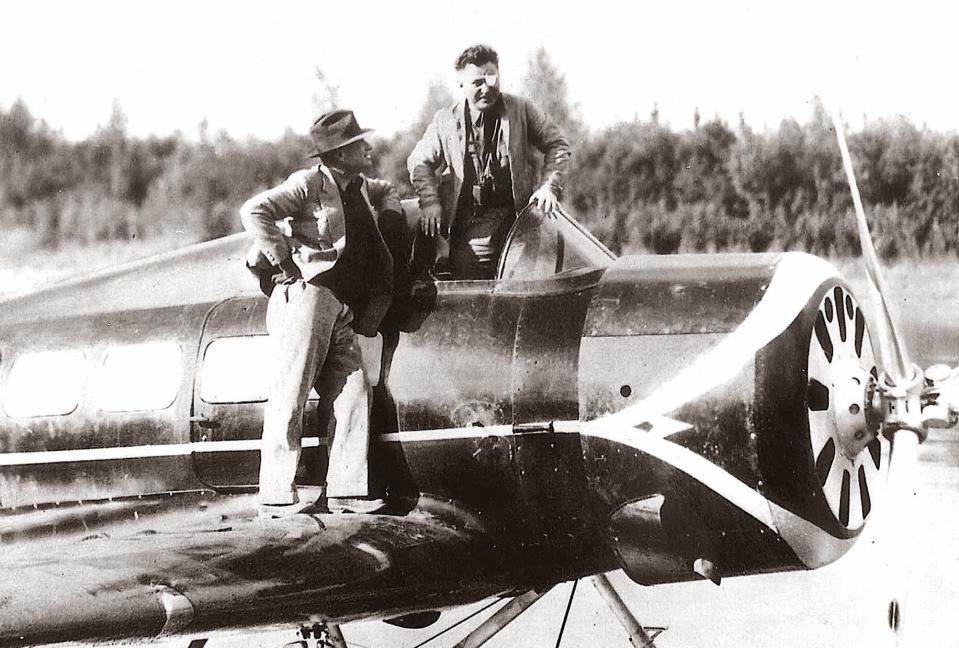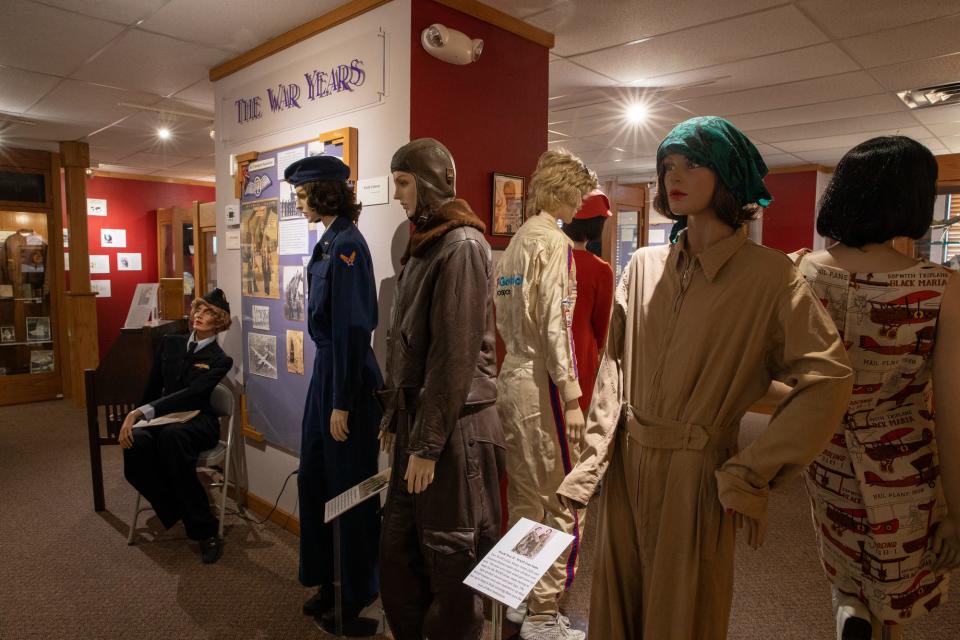Discover Oklahoma: Interested in aviation? State has some top-flight museums
- Oops!Something went wrong.Please try again later.
- Oops!Something went wrong.Please try again later.
I'll be honest and say that while strolling past the living room where the television was playing, a commercial for "Top Gun: Maverick" sparked the inspiration for this piece. Just so we're clear, I really enjoyed this film. To add, I enjoy seeing aviation-themed movies — not always, but very often. In the past, I've discussed how much I enjoy flying and how, because of my job, I've had the opportunity to ride in a variety of planes throughout the years, including an F-4, an F-14 and a few antique aircraft. I find it to be utterly delightful.
And that now brings me to what the commercial brought to mind: Oklahoma’s aviation history. For example, did you know that less than 20 years after Oklahoma Territory was settled by pioneers, whose main mode of transportation was by wagon, the first airplanes were sweeping down the plains?
The origin of the first powered flight is a matter of some contention. The first might have happened in 1906, just three years after the Wright brothers' maiden flight. Others, however, point to Charles F. Willard's flight at Oklahoma City on March 18, 1910, as the first powered flight. Regardless, it didn't take long before Oklahoma's skies seemed to be crowded with daredevils in the air. Indeed, a few of them went on to achieve legendary status as pioneers of flight.
An Enid automobile salesman named Clyde Cessna got the itch to take to the air in 1911 and never looked back. Traveling to New York, he learned how planes were made. Whereas in Oklahoma, he used the Great Salt Plains close to Jet as a training ground. According to legend, he had multiple near-death experiences while learning to fly but managed to complete a five-mile flight to Enid in December 1911. Eventually, Cessna established a plane assembly plant in Wichita, Kansas. Despite the irony, he went on to create aviation history despite never having earned a legitimate pilot's license.
More:Learn about Oklahoma's storied military history at museums across the state
During World War I, Paul Revere Braniff served as a pilot with the U.S. Army Signal Corps in France. Braniff, however, received his pilot's license from Orville Wright in 1923, after returning to Tulsa from the war. Later, Braniff and his brother Tom invested alongside four others to launch Paul R. Braniff Inc., an airline that shuttled people between Oklahoma City and Tulsa.
It was on June 20, 1929, when the first flight took off from Oklahoma City. Braniff used to drop copies of The Daily Oklahoman newspaper out the window to waiting farmers on the ground below as a means of generating more cash. From the early 1930s through the early 1945s, Braniff Airlines' headquarters were in the heart of Oklahoma City. In 1945, however, the corporation that had begun in Oklahoma City relocated to Dallas.
Oil was the lifeblood of aviation in Oklahoma and especially in Tulsa. W.G. Skelly, an oilman, spearheaded the effort in 1927 that built Tulsa's municipal airport. Even Wiley Post, a native of Maysville, Oklahoma, found success in the expanding oil-field flight industry. Post was involved in constructing the airfield at Fort Sill, where he had hopes of one day flying his own plane. Those hopes and more became true.
The idea of a film adaptation of Wiley Post's life has always struck me as unique and promising. Give it some thought! Before the tragedy that took his and Will Rogers' lives, Post broke several round-the-world flight records, discovered the jet stream, created the first high-altitude flight suit, and was a pioneer in the development of autonomous pilot systems and pressurized cockpit equipment. Considering he dropped out of high school and probably wouldn't have passed a flying physical in the present day, I think he did quite well.

A sizable percentage of American astronauts hail from Oklahoma. Shannon Lucid, Gordon Cooper, Thomas Stafford, Owen K. Garriott and Stuart A. Roosa.
Have you, however, ever come across the name Jerrie Cobb? She was raised in Ponca City and began her flight training at age 12. By age 18, she was instructing others. She became America’s first female astronaut when she was accepted into the Mercury astronaut program in 1959. She passed all the required tests but never went into space. NASA concluded that the country was not prepared to send a woman into space at the time.
However, she was highly honored. In 1959, she was named Pilot of the Year by the National Pilots Association; in 1973, she was honored with the Harmon International Trophy as the "best woman pilot of the year;" and today, she is enshrined in both the Oklahoma Hall of Fame and the Oklahoma Aviation and Space Hall of Fame.
In 2000, she was recognized for her achievements and inducted into the Women in Aviation International Pioneer Hall of Fame. Cobb spent her entire life piloting rescue missions into the Amazonian jungle in an effort to reach and aid remote, isolated, primitive tribes. And for that, she was nominated for the Nobel Peace Prize in 1981. She is among the most honored of Oklahoma’s aviators.
More:Discover Oklahoma: Grab those binoculars and head out to an eagle-watching tour
Tulsa's Air and Space Museum, The 99s Museum of Women Pilots at Will Rogers World Airport in Oklahoma City and Weatherford's Stafford Air & Space Museum are just a few of the state's top aviation museums.
Also, don't forget to stop at the Science Museum Oklahoma, where annual events like Space Day and a permanent aviation wing exhibit are well worth your time. And at the Oklahoma History Museum, you will enjoy the exhibit called “Launch to Landing: Oklahomans and Space.” To learn more about the museums in Oklahoma, check out www.travelok.com.

Dino Lalli is the co-host and one of the feature reporters for the weekly television travel show "Discover Oklahoma."
This article originally appeared on Oklahoman: You can learn about Oklahoma's aviation history at these museums

